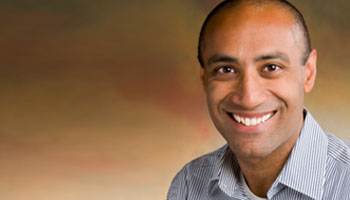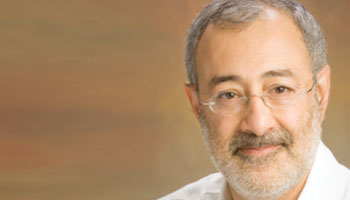HOW CAN WE HELP YOU? Call 1-800-TRY-CHOP
In This Section
Extremely Small Babies, Concussed Adolescent Drivers, Beckwith-Wiedemann Syndrome, Children With Severe Sepsis

mccannn [at] email.chop.edu (By Nancy McCann)
In our first roundup of research headlines of the new year, read about Children’s Hospital of Philadelphia’s participation in a study that found outcome disparities by race or ethnicity in children with severe sepsis, and what our Center for Injury Research and Prevention investigators are discovering about teen drivers and concussions. Learn about the first human cell models developed to study Beckwith-Wiedemann syndrome disease development, as well as red blood cell transfusions for extremely small newborns.
Outcome Disparities Found in Children With Severe Sepsis in United States

Nadir Yehya, MD
CHOP researchers found evidence of outcome disparities by race or ethnicity and insurance status, in a large, representative analysis of children with severe sepsis in the United States. The results, published in The Lancet Child & Adolescent Health, suggest the possibility of differential sepsis recognition, approaches to treatment, access to healthcare services, and provider bias that contribute to poorer sepsis outcomes for ethnic minority patients and those of lower socioeconomic position.
By using the 2016 Healthcare Cost and Utilization Project Kids’ Inpatient Database (KID), investigators, including senior author and critical care physician Nadir Yehya, MD, analyzed data of 9,816 children with severe sepsis with or without shock. The findings revealed Black children had higher odds of death than did White children. Hispanic children and Black children, particularly Black neonates, had longer hospital stays.
“Future research should look for evidence of systemic racism and related disparities in sepsis care and outcomes, as well as explore the mechanisms that underlie their existence,” Dr. Yehya said. “A clearer understanding of the reasons that these disparities exist will enable healthcare systems to develop interventions to combat them.”
CHOP coauthors include: Hannah Mitchell, BMBS; Anireddy Reddy, MD, FAAP; Diana Montoya-Williams, MD; and Jessica Fowler, MD, MPH.
Study Shows No Difference Between Higher and Lower Hemoglobin Strategies for Extremely Small Babies

Haresh Kirpalani, MD
CHOP researchers led and contributed to a NIH funded Transfusion of Prematures (TOP) Trial that determined for extremely low birth weight newborns, a higher hemoglobin threshold for red-cell transfusions did not reduce the risk of cognitive delay or death at 2 years of age, corrected for prematurity. The findings appeared in the New England Journal of Medicine.
The open, multicenter TOP trial enrolled 1,824 infants with a birth weight of 1,000 grams or less, and a gestational age between 22 weeks and 28 weeks. Following informed consent, they were randomly assigned within 48 hours after delivery to receive red-cell transfusions at higher or lower hemoglobin thresholds. The thresholds were applied until 36 weeks of postmenstrual age or discharge, whichever occurred first. At discharge from the hospital, the incidences of survival without severe complications were approximately 29 percent and 31 percent respectively.
At 2 years of age, full outcome data was available for 93 percent of enrolled infants. Of these children, approximately 50 percent had either died, or were survivors with neurodevelopmental impairment (cognitive delay, cerebral palsy, hearing or vision loss) in both the higher-threshold and lower-threshold groups, with no statistically significant difference.
“While smaller studies had suggested a benefit to a higher hemoglobin, this much larger study found no benefit from this,” said first author, Haresh Kirpalani, MD, emeritus professor of Pediatrics in the Division of Neonatology. “The TOP trial supports the approach of not needing so many blood transfusions. A broader conclusion to note is that within ‘standard care’ there are still some therapies that are untested.”
Adolescent Drivers Return to the Road Within Two Weeks Post-Concussion

Catherine McDonald, PhD, RN, FAAN
CHOP research findings published in the Journal of Adolescent Health revealed that adolescent drivers were more likely to get behind the wheel post-concussion than return to exercise or organized sports, suggesting the need for evidence-based guidelines.
The CHOP Center for Injury Research and Prevention (CIRP) research team, including first author and pediatric nurse scientist Catherine McDonald, PhD, RN, FAAN, looked at data of 332 adolescent drivers, ages 16 to 19, diagnosed with a concussion within 28 days of injury, and seen at the Minds Matter Concussion Program between Jan. 31, 2017, through Aug. 31, 2018.
Nearly half of adolescents who sought specialty care for a concussion were back to driving within two weeks after the injury. Among those who had returned to driving since their injury, only 28 percent had returned to exercise, and only 11 percent had returned to playing an organized sport, while 79 percent had returned to school. Thus, families who are making school and sports accommodations for their teen’s injury may not be considering driving in similar light as a cognitively demanding and high-risk activity.
“We’re looking at this intersection of driving and concussion and see teen drivers returning to what is already a very high risk behavior for them and doing so with an injury known to cause cognitive impairment,” Dr. McDonald said. “This study sought to provide information on what teens and families are actually doing in the absence of structured clinical guidelines.”
CHOP coauthors include: Divya Jain, Eileen Storey, Madeline Gonzalez, Christina Master, MD, FAAP, and Kristy B. Arbogast, PhD.
Learn more from CIRP’s Research in Action Blog, at CHOP News, and Penn Today.
Human Cell Models Developed to Study Beckwith-Wiedemann Syndrome Disease Development

Jennifer Kalish, MD, PhD
Researchers from the Beckwith-Wiedemann Syndrome Clinic, part of the Division of Human Genetics at CHOP and the Center for Childhood Cancer Research, developed the first human cell models of Beckwith-Wiedemann syndrome (BWS), a genetic disorder with overgrowth and cancer predisposition. These models, derived from patient cells, will allow researchers to more thoroughly investigate the role of growth differences and disease development in multiple tissues seen in patients with BWS. The findings appeared in Epigenetics.
The study team developed the first induced pluripotent stem cells (iPSC) model derived from patients with BWS. They derived both BWS and non-BWS iPSC lines from the same patient’s fibroblasts. Using this method, they were able to determine that DNA methylation and gene expression patterns of the imprinted region in the iPSC lines reflect cells from the parent and remain stable over time. Additionally, expression in insulin signaling, cell proliferation, and cell cycle pathways were different in BWS patients compared with the controls.
“This work will allow us to better understand the mechanisms leading to overgrowth and cancer in BWS and improve how we care for our patients,” said senior author Jennifer Kalish, MD, PhD, director of the Beckwith-Wiedemann Syndrome Program of Excellence.
CHOP coauthors include: Natali Sobel Naveh, PhD; Deborah French, PhD; Alyssa Gagne; and Chintan Jobaliya.
See this CHOP press release to learn more.
ICYMI
Catch up on our headlines from the Dec. 18 In the News:
- New Brief Includes Recommendations to Protect Children From Firearms
- No Changes in Preterm Births or Stillbirths Seen During COVID-19
- Friedreich's Ataxia Center of Excellence Awarded $1.275 million
- Mutations in Key Protein Linked to Neurodevelopmental Issues
- CHOP Postdocs Featured in 'Voices on Diversity' by Cell Press
Keep up with our news, stories, and updates in real time by following us on Twitter, Facebook, LinkedIn, or Instagram. Or subscribe to our newsletter to get an email sent every other Friday by signing up here.


